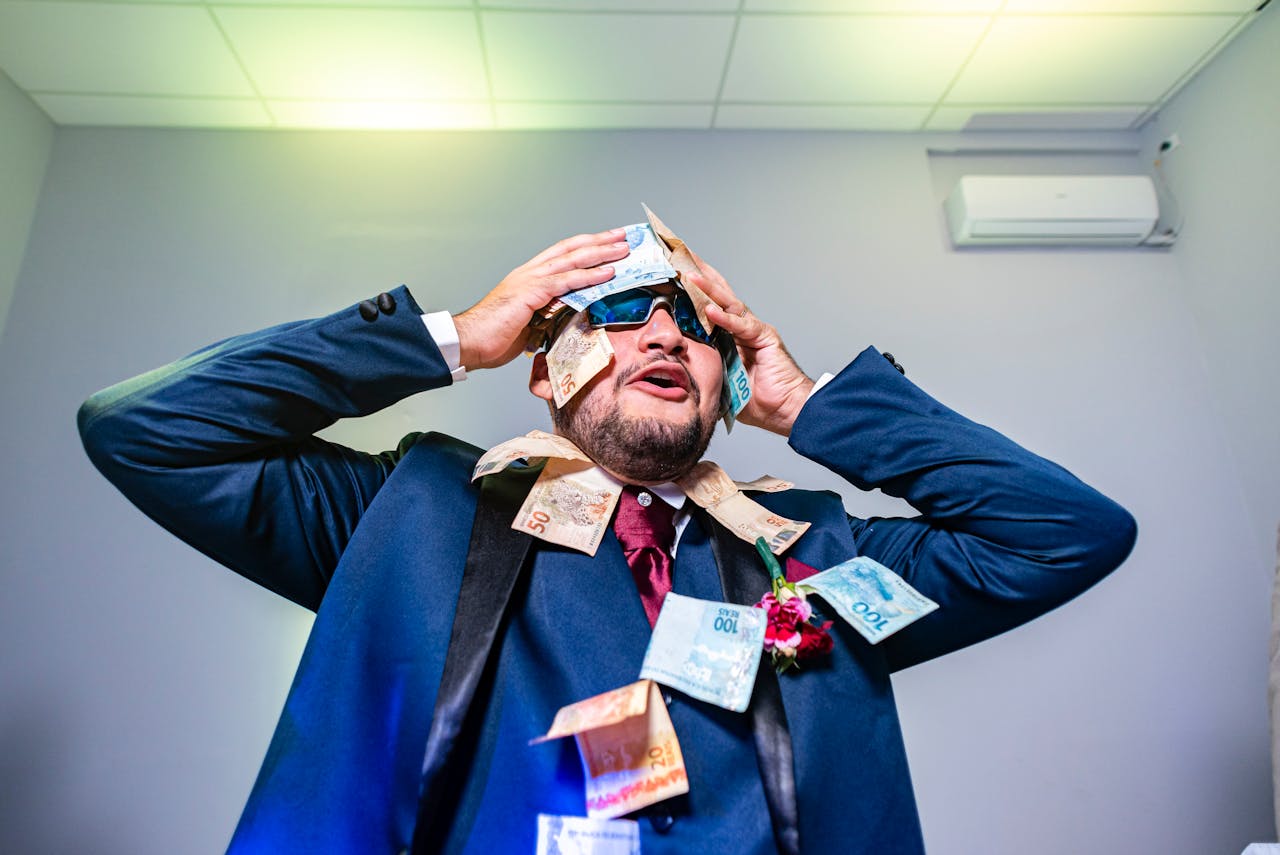Creating a Personal Development Plan (PDP) is a powerful way to focus on your growth and build a strong personal brand. A well-crafted plan helps you identify what you want to achieve, both personally and professionally, and lays out the steps to get there. This guide will show you how to create a PDP that aligns with your goals, values, and vision, so you can grow with purpose and build a brand with a strong identity.
What is a Personal Development Plan?
A Personal Development Plan (PDP) is a roadmap that outlines your goals, the skills you want to develop, and the actions you’ll take to achieve them. It’s a strategy for self-improvement that keeps you focused and helps you track your progress. Whether you want to grow in your career, learn new skills, or improve personally, a PDP can guide you towards your goals.
Why You Need a Personal Development Plan
Having a clear plan for growth is essential for anyone looking to strengthen their personal brand and achieve success. A PDP helps you:
- Stay Focused: A plan helps you prioritize what matters most and avoid distractions.
- Measure Progress: Tracking your progress lets you see how far you’ve come and where you need to improve.
- Boost Confidence: Each step forward boosts your confidence, making you feel more capable and motivated.
- Build a Strong Identity: Following a PDP that reflects your values and goals helps create a brand that’s authentic and meaningful.
Step 1: Set Clear Goals
The first step in creating a PDP is to set clear, achievable goals. These goals should reflect what you want to accomplish in both your personal and professional life.
How to Set Goals:
- Identify Your Priorities: Think about what’s most important to you. Do you want to advance in your career, build a new skill, or improve a personal quality?
- Set SMART Goals: SMART goals are Specific, Measurable, Achievable, Relevant, and Time-bound. For example, instead of saying “I want to be a better communicator,” set a SMART goal like, “I will complete a communication course by the end of the year to improve my presentation skills.”
- Divide Goals into Short- and Long-Term: Short-term goals give you quick wins, while long-term goals keep you focused on the bigger picture.
Clear goals give direction to your development plan, keeping you motivated and purposeful.
Step 2: Identify Skills and Knowledge Needed
Once you have your goals, think about the skills and knowledge you need to reach them. This might include technical skills, soft skills, or new areas of knowledge.
How to Identify Needed Skills:
- Research What’s Required: Look at people who’ve achieved similar goals. What skills do they have? For example, if your goal is to grow in marketing, you may need skills like content creation, social media management, or data analysis.
- Evaluate Your Current Skills: List your strengths and areas where you need improvement. This will show you which skills to focus on.
- Prioritize Key Skills: Focus on the skills that will have the biggest impact on achieving your goals.
By understanding what skills and knowledge you need, you can take targeted steps toward growth, making your efforts more effective.
Step 3: Create an Action Plan
An action plan is a list of specific steps you’ll take to reach your goals. This breaks down your larger goals into smaller, manageable tasks.
How to Build Your Action Plan:
- Break Down Each Goal: Divide each goal into smaller tasks. For example, if your goal is to improve your public speaking skills, tasks might include practicing in front of friends, attending a workshop, or joining a local speaking group.
- Set Deadlines: Assign deadlines to each task to create a sense of urgency and keep you on track.
- Prioritize Tasks: Order tasks by importance or difficulty. Start with tasks that will give you quick wins to build momentum.
An action plan provides structure to your personal development journey, helping you see exactly what needs to be done and when.
Step 4: Find Resources for Learning and Growth
To develop new skills or gain knowledge, you’ll need resources. These can include courses, books, mentors, or online tools that support your learning.
Tips for Finding Resources:
- Look for Online Courses: Websites like Coursera, Udemy, and LinkedIn Learning offer a wide range of courses for personal and professional growth.
- Read Books and Articles: Find books or blogs written by experts in your field. This is a cost-effective way to expand your knowledge.
- Seek Out Mentors: A mentor can offer advice, share experiences, and guide you on your path. Look for someone who’s achieved what you aspire to accomplish.
- Join Workshops or Networking Events: Events are great for learning, making connections, and getting inspired.
Having the right resources makes learning easier and helps you grow more quickly.
Step 5: Track Your Progress
Tracking your progress is crucial for staying motivated and ensuring you’re on the right path. By regularly reviewing your PDP, you can see what’s working, what needs adjustment, and celebrate your achievements.
How to Track Progress:
- Set Check-In Dates: Choose dates to review your plan, such as monthly or quarterly. This keeps you accountable and gives you time to make adjustments.
- Use a Journal or App: Write down your progress or use an app to track completed tasks, skills learned, and goals achieved.
- Reflect on What You’ve Learned: Think about the lessons you’ve learned along the way and how they’ve contributed to your growth.
Tracking your progress not only shows you how far you’ve come but also helps you refine your plan to make it even more effective.
Step 6: Adjust Your Plan as Needed
Personal development is an ongoing process, so your plan should be flexible. As you grow, you may discover new interests or challenges, and your goals might change. Adjusting your plan helps you stay aligned with what’s important to you.
How to Adjust Your Plan:
- Reassess Your Goals Regularly: Goals may evolve as you gain experience. Make sure your goals still align with your vision and adjust if needed.
- Add New Skills or Tasks: If you discover new areas you want to explore, add them to your plan.
- Be Open to Change: Life is unpredictable, so stay adaptable and make changes that reflect your current needs and ambitions.
A flexible plan keeps you on track even as your personal and professional circumstances evolve.
Step 7: Celebrate Your Achievements
Celebrating your achievements, big or small, boosts motivation and reminds you of the progress you’re making. Recognizing your accomplishments reinforces your commitment to personal growth and helps you stay focused on future goals.
How to Celebrate:
- Acknowledge Milestones: Celebrate reaching significant goals or completing challenging tasks. This could be as simple as treating yourself to something you enjoy.
- Share Your Progress with Others: Tell friends, family, or colleagues about your achievements. Sharing your journey can inspire others and strengthen your brand.
- Reflect on Your Growth: Take time to appreciate how far you’ve come. Reflecting on your journey helps you see the value in each step and keeps you motivated for what’s next.
Celebrating your achievements reinforces your growth and reminds you that each step brings you closer to your bigger vision.
Building a Strong Identity Through Personal Growth
A well-thought-out Personal Development Plan helps you create a brand that’s authentic, resilient, and aligned with your goals. By focusing on continuous growth, learning new skills, and staying adaptable, you build a brand that reflects your commitment to excellence and innovation.
When you commit to a PDP, you’re not only working towards personal goals but also creating a professional image that people trust and respect. A strong personal brand comes from consistently working on yourself, staying true to your values, and always striving to improve.
Final Thoughts: Embrace the Journey of Personal Development
Creating a Personal Development Plan is an investment in yourself and your future. It’s a commitment to becoming the best version of yourself, both personally and professionally. By setting clear goals, identifying the skills you need, creating an action plan, and staying open to learning, you can achieve growth that’s meaningful and lasting.
Remember, personal development is a journey, not a destination. With each step, you build a brand that’s unique, impactful, and true to who you are. Embrace the process, celebrate your progress, and keep moving forward with confidence and purpose.

